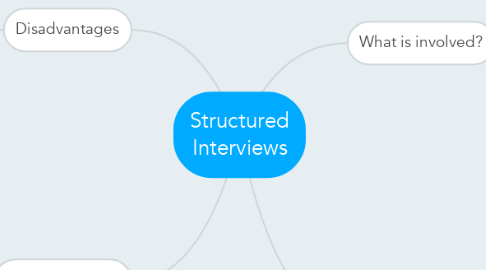Structured Interviews
by matt weaver


1. What is involved?
1.1. Standardised interview schedule
1.1.1. General questions come before specific questions
1.1.2. Earlier questions may affect salience of later ones
1.1.3. First questions should be directly related to the topic
1.1.4. Potentially embarrassing or sensitive questions towards the end
1.2. Closed, pre-coded or fixed choice
1.3. Aiming for clear answers (that can be quantified)
1.3.1. Goal is to be able to aggregate answers
1.3.2. Need to minimise variation between interviews
2. Advantages
2.1. Reduces error due to interviewer variability
2.2. Differences in responses are due to 'true variation', not inconsistencies in the conduct of interviews
2.3. Potential sources of error are reduced by standardisation (question wording, memory, misunderstanding)
3. Disadvantages
3.1. The interviewee is limited as to what answers he can give
3.2. The interview effect
3.2.1. The personality of the interviewer may influence the answers given by the interviewee
3.2.2. The interviewee may misrepresent the truth to make himself seem more socially acceptable
